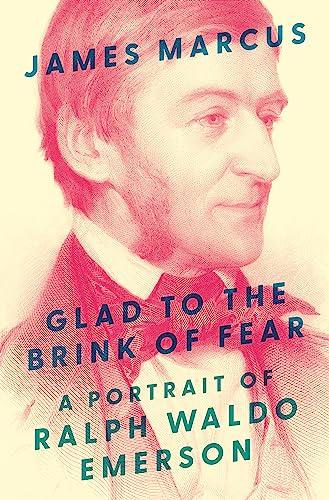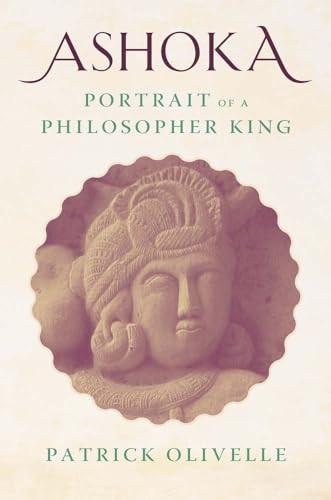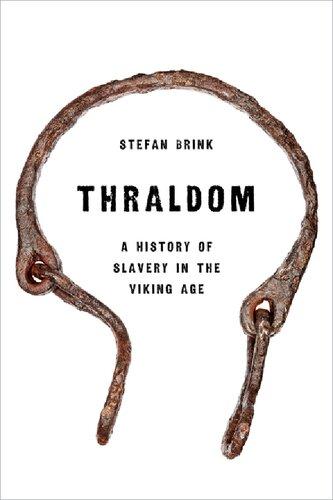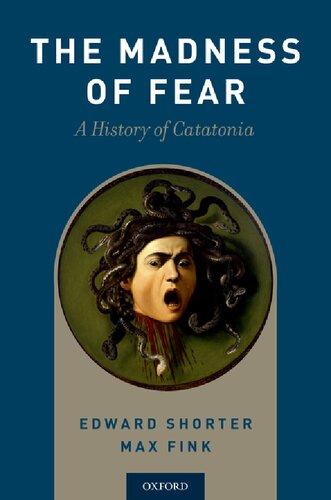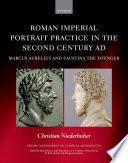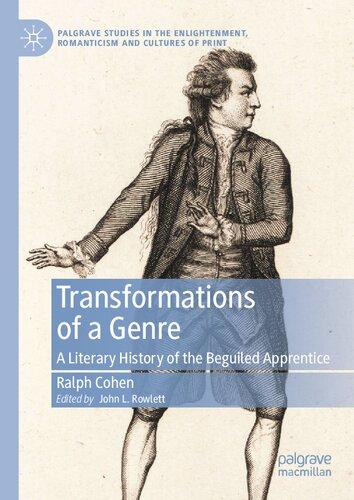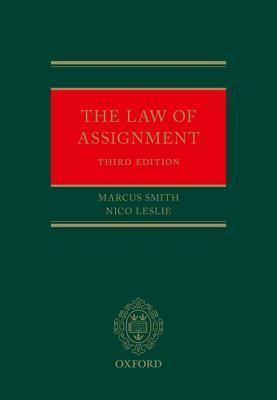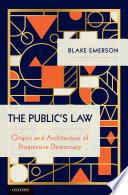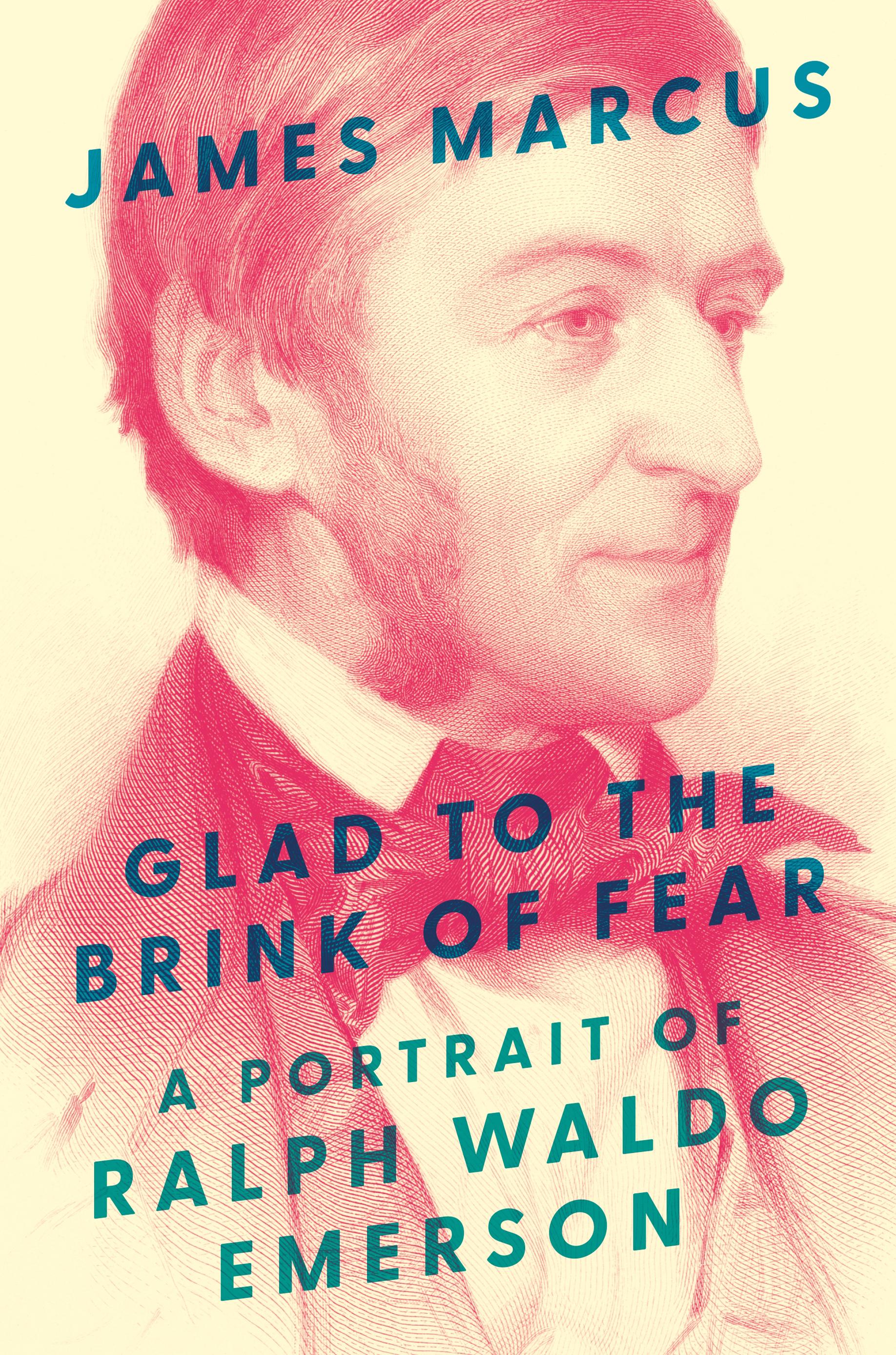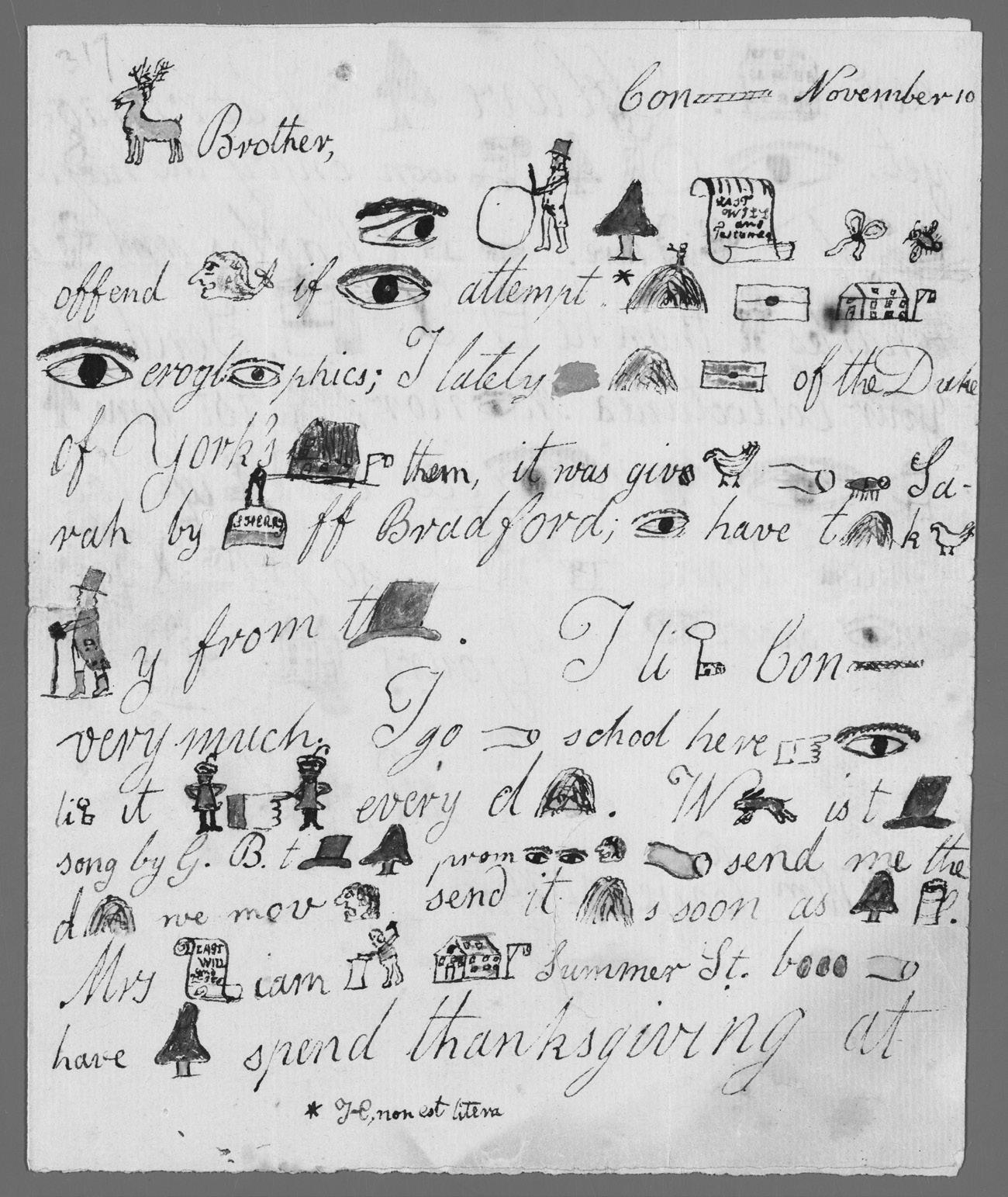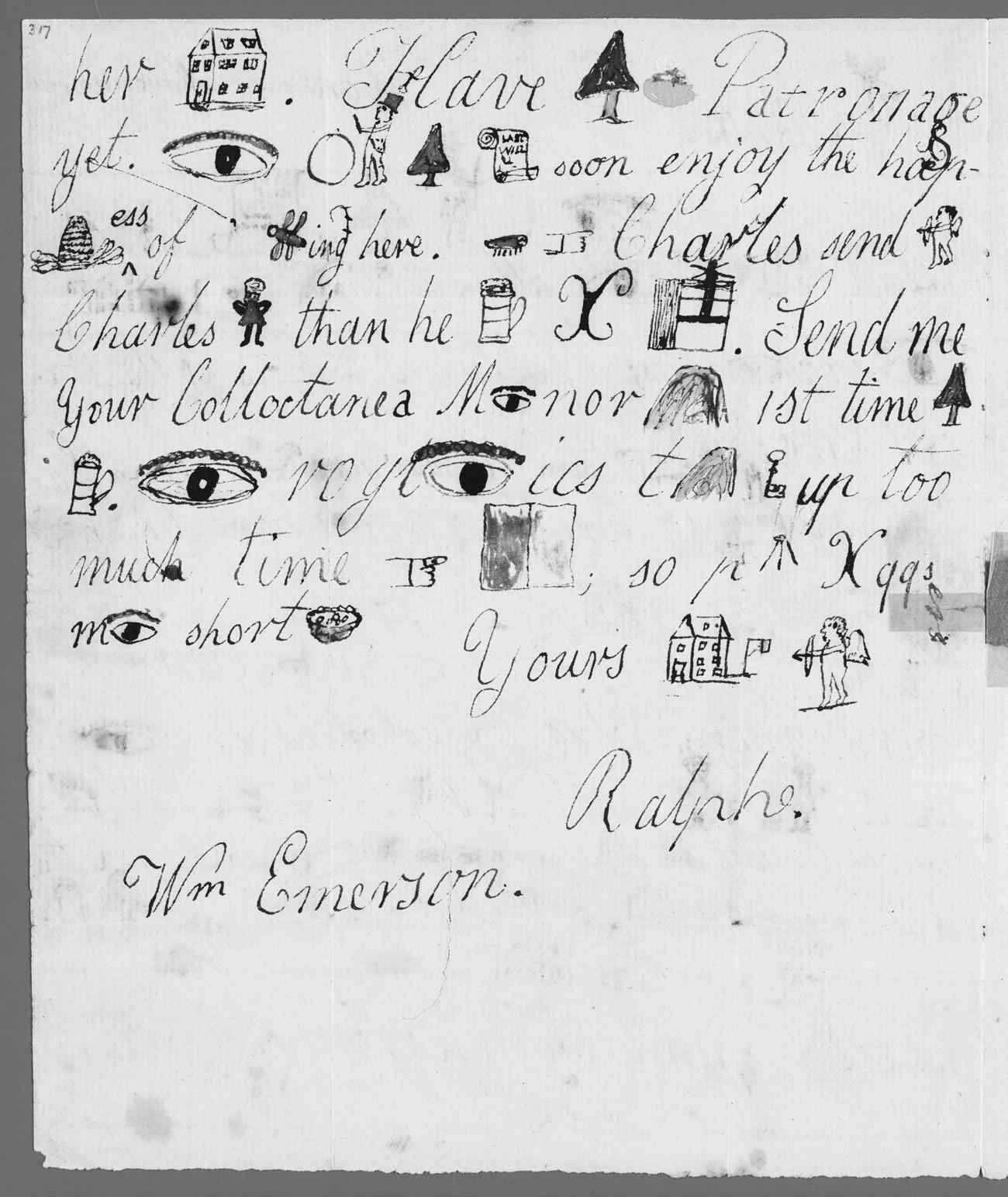INTRODUCTION
At every family gathering, there is an uncle you are desperate to avoid. He is full of advice you don’t want, and despite your efforts to slip away, he always pins you down on the sofa or in that narrow space next to the refrigerator. Sometimes he appears feeble, but mostly he is inexhaustible in his moralizing. This harmless individual smells of witch hazel and shoe polish. Sometimes he asks you questions, but he never listens to the answers. You are simply the unwilling receptacle for his wisdom, all of which sounds terribly familiar.
At first glance, Ralph Waldo Emerson seems to be the irritating uncle at the feast of American letters. Trust thyself , he keeps telling you. It sounds like the Victorian version of self-help—which is why it ends up on coffee mugs to this very day. What’s more, his insistence on selfrealization has made him into a mascot for big business. His image has been enlisted to sell typewriters, cardboard boxes, Turkish cigarettes. The insurance industry, too, has found him an irresistible branding tool: Emerson “was the voice of the American dream,” declared a copywriter for John Hancock Mutual Life in 1961, while also giving him a pat on the head for arriving at his lecture engagements on time. In this way, our great apostle of nonconformity has been transformed into a cheerleader for the most conformist aspects of American life.
In fact, Ralph Waldo Emerson is anything but a Victorian relic. Nearly a century and a half after his death, he remains a visionary figure, who speaks to our cultural moment with tremendous urgency. So many of the conundrums of modern American life—identity, race, inequality, ecological apocalypse, and the endless tug-of-war between the individual and the tribe—were anticipated by this slope-shouldered prophet in his rocking chair. This should surprise nobody. He was, after all, the first
great American writer. He was also among the first to articulate what we have come to think of as our national character: self- reliant, selfconscious, scornful of institutional pomp and with a built-in bullshit detector. We are, in Emerson’s view, theoretically modest but plainly superior to our mummified Old World counter parts. We are reflexively pragmatic but with a deep vein of spiritual yearning and, yes, spiritual confusion.
Born in Boston in 1803, when the United States was a backwater with a population of fewer than four million, Emerson insisted that we shed the inferiority complex of the ex-colonial. Europe, he insisted, was the past. The future was here , in what Emerson conceived of as the vast vacancy of the North American continent. Of course this was a mythological view of the place, which happened to be tenanted by several hundred thousand Native Americans, even after the genocidal decades preceding Emerson’s birth. It was poetry, not policy. Yet Emerson’s sense that the invention of Amer ica marked a deep rupture with the Old World, and not simply a small-town, stump-clearing continuity, was correct—and bracing. “Our day of dependence,” he wrote in 1837, “our long apprenticeship to the learning of other lands, draws to a close.”
Casting off the cultural yoke of Europe was a major act of rebellion. But Emerson was a rebel in other aspects of life, too, the most dramatic being his abandonment of organized Christianity. This was a radical act for a man in his position. Like seven generations of his family before him, he was a clergyman. Indeed, an Emerson baby was more or less a pastor-in-miniature, lacking only divinity classes and a clerical collar. Emerson’s pulpit, too, was a historic one: the Second Church of Boston, which had previously housed the heavy-hitting Puritan divine Cotton Mather.
By the time Emerson was appointed, in 1829, the congregation had shucked off its Puritan rigidities in favor of Unitarianism. This was the most mild-mannered of Protestant creeds, which denied that Christ was the son of God and rejected the Calvinist doctrines of original sin and predestination. Surely such an elastic system of belief would give the young pastor plenty of room for his own uncertainties. Yet Unitarian-
ism, just thirty years after it had gained a toehold in a rapidly developing nation, was already a little calcified. It was now the faith of well-heeled Bostonians—it was a belief system with a powdered wig on its head and silver buckles on its shoes.
It was besieged, as well, on two sides. The Congregationalists, from whose midst the Unitarians had sprung, were infuriated by the transformation of Jesus into a mortal man and human beings into free agents. Meanwhile, there was the explosive rise of evangelical Christianity in the United States, which began in the early decades of the nineteenth century. The Methodists, the Baptists, the Disciples of Christ— along with a wild profusion of splinter sects, buzzing like mayflies through the bright air of belief— would soon swamp both New England creeds.
Emerson’s exit from the pulpit in 1832 cannot be understood outside of this context. The Second Great Awakening, that tsunami of evangelical fervor, had been building in the United States for the past three decades. Half the country had decided that the old forms of worship were empty. They wanted something more real, more visceral. They wanted to speak directly to God, and have Him respond in kind. Emerson was never an evangelical: his temperament and training inclined him in the opposite direction. Yet he, too, was eager to knock down any barrier to direct communication with the divine. A pastor in this sense was a middleman—a broker of spiritual goods. Why not simply mothball the old faiths and, as Emerson put it, “enjoy an original relation to the universe?”
He paid a price, of course, for walking away from the Second Church. He lost his job and an ironclad position in the very society his ancestors had helped to create. (Six years later, a visitor to an upper- crust Boston household noted that his hosts had been taught “to abhor and abominate R. W. Emerson as a sort of mad dog.”) It was only by breaking with the church, however, that Emerson was able to discover his true vocation. He would be an essayist—a creator of secular sermons, you could say, whose ecstatic, icon-smashing prose grabbed readers by the lapels and left them shaken, tickled, transformed. “The maker of a sentence,” he once wrote, “launches out into the infinite and builds a road into Chaos and Old Night, and is followed by those who hear him with
something of wild, creative delight.” As a description of both Emerson the writer and his eventual audience, this can hardly be bettered.
Ah, Emerson’s prose! What needs to be said, first of all, is that he wrote some of the greatest American sentences—hundreds, maybe thousands of them. His golden hits have been quoted so many times that they are hard to view with a fresh eye. Yet they have lost little of their snap, vigor, and residual sadness:
A foolish consistency is the hobgoblin of little minds, adored by little statesmen and philosophers and divines.
An institution is the lengthened shadow of one man.
In every work of genius we recognize our own rejected thoughts: they come back to us with a certain alienated majesty.
There is a kind of contempt of the landscape felt by him who has just lost by death a dear friend.
Every spirit builds itself a house; and beyond its house, a world; and beyond its world, a heaven.
A strange process too, this, by which experience is converted into thought, as a mulberry leaf is converted into satin.
I pack my trunk, embrace my friends, embark on the sea, and at last wake up in Naples, and there beside me is the stern Fact, the sad self, unrelenting, identical, that I fled from.
Tobacco, coffee, alcohol, hashish, prussic acid, strychnine, are weak dilutions: the surest poison is time.
Crossing a bare common, in snow puddles, at twilight, under a clouded sky, without having in my thoughts any occurrence of special good fortune, I have enjoyed a perfect exhilaration.
The sentence was Emerson’s unit of thought. He called each one an “infinitely repellent particle,” meaning that it was constructed to stand
on its own, not lean lazily against its neighbors. If he had come clean and billed himself as an aphorist, that would have been dandy. Yet he was an essayist, who looked both to Michel de Montaigne and to the homilyspeckled format of the sermon for his model. This created an odd friction in his work. The essayistic form usually depended on logic and linearity, while the self-sufficient nature of his sentences worked in the opposite direction. Emerson glued them together, and they kept flying apart.
This is all by way of saying that the essays, for which he is best known, can be tough sledding for a modern reader. They move in mysterious ways. They decline to hold your hand or pat you on the back. They revel in pretzel-shaped paradox. They practically invite you to pry loose the incandescent material—to make up a private anthology of the most explosive bits and leave the rest behind. No wonder Emerson himself described his creations as “anecdotes of the intellect, a sort of Farmer’s Almanac of mental moods.”
It’s worth persisting. These are, let’s recall, the essays that electrified Henry David Thoreau, Walt Whitman, Margaret Fuller, Friedrich Nietzsche, Emily Dickinson, and William James (for whom Emerson was not merely a spiritual godfather but an actual godfather). A prolonged dip into “The American Scholar” or “Self-Reliance” or “Circles” remains an adventure. You get the glimmers of ecstasy, the tonic zing of the best sentences, and a superb dose of Yankee swagger as Emerson dispatches one sacred cow after another, often by the herd.
All of those sentences required time. Emerson’s method was to pile them up in his journals, which he kept for six decades. Here was an enormous catchment for whatever he thought, dreamed, read, experienced, lamented. He once described the journals as a “savings bank,” but they were more like an open-pit mine—a giant deposit of unprocessed ore that supplied most of the rhetorical gold in his published work. In many cases he buffed and reshaped this raw material before embedding it in an essay. But often he transplanted it intact—and just as often, the original formulations were superior in terms of speed, immediacy, and self-disclosure. I think Emerson recognized the usefulness of having both a private voice and a public voice. Talking to yourself was a spiritual excavation, full of intensity and acrobatics, while talking to others forced you to connect.
And connect he did. The conventional emphasis on Emerson as a solitary—a man most at home in his America-sized mind—shouldn’t blind us to the fact that he was an extremely public figure. For almost fifty years, he was a star of the national lecture circuit. He spoke at theaters, libraries, hospitals, and churches. On other occasions, he plied his trade in ramshackle prairie venues, and sometimes acted as his own booking agent and producer. In a good year he might give as many as eighty lectures, charging from ten to fifty dollars a pop.
Two things should be kept in mind here. First, at the time of Emerson’s birth, the United States was still a country starved for entertainment. In part this can be chalked up to the pleasure-hating impulses of the Puritans, who were nonetheless so desperate for titillation that they sought it out in high-minded tracts and sermons. By the 1830s, when Emerson began touring, things had loosened up considerably. Yet the itinerant lecturer remained a primary form of entertainment for most Americans, delivering something halfway between a TED talk and a sermon, with a dash of standup comedy tossed in for good measure. Emerson was among the top attractions, with a sporting attitude toward the often primitive amenities in the American interior, not to mention the brutal winter and some very tough audiences. “The climate and people,” he noted, “are a new test for the wares of a man of letters.” It was a test he was determined to pass, as he read his latest lecture to one frontier focus group after another.
Some of these listeners felt their patience fraying by the end of the evening. Rutherford B. Hayes, the future U.S. president who attended several of Emerson’s lectures during the 1850s, conceded that he held the “undivided attention of his audience”—but that “there is no such thing as one of his thoughts following from another.” Yet Emerson’s popularity was no fluke. Newspapers regularly described his platform manner in ecstatic terms: he was, in the eyes of one such reviewer, a “spiritual prism though which we see all beautiful rays of immaterial existences.”
What was he talking about, both on the page and on the stage? Emerson addressed a great many topics in his career. He shared his thoughts on
nature, beauty, language, ethics, history, politics, friendship, poetry, power, money, slavery, fate. What’s more, these topics were fluid—they had a kaleidoscopic tendency to intermingle in the author’s mind. This wasn’t from lack of focus. No, Emerson believed that grasping the manifold and metaphoric connections between things was the whole point of thinking in the first place. “Man is an analogist,” he wrote, “and studies relations in all objects. He is placed in the center of beings, and a ray of relation passes from every other being to him.”
The urge to trace these relations was, for him, an old one. Emerson had been a metaphor-besotted creature since he was a child. One of his first surviving letters, sent to his brother William when Emerson was eleven years old, consists largely of pictograms—what we would now call emojis. “Hope” is a little man with a hoop. “I” is represented repeatedly by an eye, peering off to the side or straight at the reader.
I don’t want to make too much of this youthful frolic. Still, it looks ahead to a mature writer who enshrined metaphor as the primary tool of perception. Every thing was itself and something else. The material world, what we agreed to call reality, could never be exhausted, since its every fact pointed to some corresponding fact in the spiritual realm. In the wrong hands (and sometimes those were Emerson’s hands), this could turn into a strategy of avoidance. You could dodge difficult questions by alchemizing them into something else—into metaphorical moonshine. For the most part, though, it made his prose magical, with an almost surreal leaping from limb to limb of the author’s argument.
That argument, more often than not, was about the self. Emerson certainly wrote about all those topics listed above. But once they went through the spiritual prism, they often turned into sustained conversations about the one and the many, the soul and society. His mightiest topic was “the infinitude of the private man.” Every human being, Emerson insisted, should negotiate terms with the great world, and not rely on the standardized contract handed down by the church, the state, or the village elders.
This conviction was not his alone. By the early 1830s, there was a loose network of kindred spirits scattered throughout New England. Many, like Emerson, were Boston clergymen who had grown impatient
FIGURE 1 First page of RWE’s letter to William Emerson, November 10, 1814. Courtesy of Emerson Family Correspondence, Houghton Library, Harvard University, MS Am 1280.226 (Box 23: 2012).
with what he called the “corpse-cold Unitarianism of Brattle Street,” serving up the “thin porridge or cold tea” of an attenuated faith. They were in no sense a uniform group. Some, like Emerson or the pioneering feminist Margaret Fuller, were primarily writers. Others were activists. Bronson Alcott, for example, was an ardent if exasperating advocate for educational reform, while Orestes Brownson inveighed against capitalism and declared Jesus “the prophet of the workingmen.” What they had
FIGURE 1. Continued.
in common was an absolute belief in subjective experience. The self, in this view, was not a passive recipient of what the world had to teach it. Instead the self created the world by perceiving it, shaping it, cutting a path through its teeming and intoxicating confusion.
This elevation of mind at the expense of fusty old matter irritated many in Boston and beyond. After all, the generation preceding Emerson’s was very much in thrall to the Enlightenment. They favored empiricists like John Locke, who described the mind as a kind of recording device, a blank slate to be scribbled upon by the senses. (It was not only Locke’s mechanistic notion of consciousness that made him such a dominant figure: his Second Treatise of Government (1689), with its defense of individual life, liberty, and property, had a crucial role in shaping the Constitution of the United States.) More generally, educated Americans of the day viewed themselves as rational creatures. They considered the scientific advances of the last century to be a philosophical housecleaning, which had left a great deal of medieval baggage—superstition, monarchy, predestination, the Ptolemaic universe—at the curb. They were, to a large degree, materialists. If they believed in God, they also believed that His creation was solid enough to rap your knuckles on.
But now came Emerson and his starry- eyed cohort. Their ideas smacked of Germanic philosophy—in par ticular, of Immanuel Kant, the great Idealist who argued that the material world was in some sense eclipsed by our mind-manufactured conception of it. Borrowing a bit of Kant’s terminology, critics came up with a jeering nickname for these homegrown mystics: Transcendentalists.
As a slur, this was a complete dud. Emerson and his cohort were happy to wear it as a badge of honor. Their understanding of Kant was a little vague, relying upon a bucket brigade of European popularizers, including Thomas Carlyle and Samuel Taylor Coleridge. But like the German thinker, they had come to find Locke’s empiricism almost intolerable. Souls were not simply repositories for sensory input, or datacrunching machines capable of spitting out the odd abstraction. They were active, they were alive, they embodied certain notions about the world that were baked into human consciousness, not imported from the outside. Kant made the mind the ultimate arbiter of experience. No
wonder Emerson, in a classic lecture called “The Transcendentalist,” defined the new movement as “Idealism as it appears in 1842.”
Yet German Idealism was not the only inspiration for the Transcendentalists. The spirit of Romanticism was afoot, with its emphasis on the emotional life of ordinary people, and the notion of divinity lurking in the humblest facets of the natural world. The ecclesiastical earthquake of the Second Great Awakening was also part of the picture. Again, the evangelicals had largely rejected the Calvinist doctrine of predestination. Like the Unitarians, they argued for free will, for human agency. You were not the robotic vessel for data collection that Locke had suggested. You could, in a manner both sacred and secular, save yourself. That was a very Emersonian conclusion.
It was revolutionary, too. Many Americans had settled the New World in what were essentially joint- stock companies. They worked and worshipped in unison. They assembled into groups, guilds, prayer circles. When Alexis de Tocqueville made his trek across the young republic, in 1830, he was struck by this habit of communal cohesion. Americans, he noted, were “forever forming associations. There are not only commercial and industrial associations in which all take part, but others of a thousand different types—religious, moral, serious, futile, very general and very limited, immensely large and very minute.” To a society built on herd behav ior, the idea of the solitary, self-propelled individual was a strange one. It was also a little frightening, a threat to the order of things.
The quarrel between the single soul and society goes on to this very day. But the terms of that quarrel keep changing, sometimes with dizzying speed: Is individualism a form of salvation or suicide? It depends on when you ask. I am writing these sentences in the early weeks of 2023. For the last three years, we have been in the midst of a deadly pandemic, which has filled the air with murderous microbes and killed more than a million Americans. The disease drove so many of us into our separate burrows, splintered communities large and small, made what used to be casual encounters with loved ones into deadly gambles. We were isolated as never before. We became, you might say, involuntary Emersonians, forced to fall back on the resources of the self.
Still, a pandemic is a strange occasion to stump for individualism. Vanquishing such an illness calls for communal effort— the quickest way to acquire herd immunity is for every single person to cooperate. Millions of Americans did exactly that, dutifully lining up for vaccinations, wearing masks, keeping their distance. Meanwhile, the demand for conformity, especially when posed by bureaucrats in the nation’s capital, touched an old and very Emersonian nerve. How dare the government stick its technocratic nose into the lives of its citizens, and its dodgy vaccines into their unwilling arms!
Emerson’s ideas could be reasonably deployed by both sides. This patron saint of an atomized America did in fact recognize the need to connect, especially in the face of civic crisis. “The whole creation is made of hooks and eyes, of bitumen, of sticking-plaster,” he wrote late in his life, “and whether your community is made in Jerusalem or in California, of saints or of wreckers, it coheres in a perfect ball.”
Yet his ringing defense of self-reliance was simply too powerful not to be picked up by the anti-maskers. In the waning days of 2020, for example, an Olympic gold medalist (beach volleyball) noted on social media that she had gone shopping without a mask. This was a political gesture, not an accident. When she was taken to task, also on social media, who did she turn to for rhetorical ammunition? “ ‘Your genuine action will explain itself and will explain your other genuine actions,’ ” she shot back, quoting Emerson. “ ‘Your conformity explains nothing.’ ”
This tug- of-war plays out in public policy and in individual souls, including mine. I wore a mask. I got the shots. I cursed the anti-vaxxers I saw every night on television. Yet some part of me responded to the siren song of individualism, as deeply embedded in American life as a Pavlovian reflex. I understood the skeptical attitude toward the leviathan of big government—the bumbling giant that can see people only in their faceless, bar- coded aggregate— and sometimes wondered whether the cloth mask wasn’t a kind of fig leaf. I could, in other words, feel the pitched battle between the one and the many going on in my own head. Truly, the pandemic could have been dreamed up as a stress test for Emerson’s ideas. How can we survive apart? How can we survive together?
To be clear, I’m not tracing this fissure, this national neurosis, to Emerson alone. No individual—not even one who staked his very life on individualism—can mold a nation in quite that way. Still, his eloquent riffs on the primacy of self and the suffocating conformity of the tribe penetrated deep into the American psyche. It wasn’t only the cultivated readers of his essays who absorbed his thoughts; it was also the average guy in Sheboygan who heard him speak in some frozen lecture hall. Those thoughts have never stopped reverberating, even as Emerson himself was relegated to the sanitized precincts of the middle-school curriculum.
You see what Emerson did to Amer ica. But what did he do to me—to someone whose habits of thought have been subtly, unmistakably transformed by my encounters with him? I first discovered him during a difficult period in my own life. I was struggling with a chronically ill spouse, a vulnerable child, and, in the end, a collapsing marriage. I was very lonely. Sometimes, after my wife and child were asleep, I would pick up an old paperback collection of Emerson’s essays—it had been knocking around the house for years, with its mysterious cover image of the author amid the old- growth timber. The somber cadences and stained- glass imagery of “Circles” and “Experience” were oddly consoling.
This was a surprising development. Emerson in his essays is, as I have already suggested, a lofty figure. He navigates the rarified atmosphere of Idealism and often darts over the heads of his all-too-human readership. He does not console in any conventional manner. He does not offer bear hugs, ready sympathy, nor the slightest evidence of his own spiritual or emotional scars. Even his invocation of grief over the death of his beloved son in “Experience” is aimed at minimizing that very emotion, denying its capacity to hurt the author.
Yet there was something in the essays that made it easier for me to get through the days. They helped me to (as John Berryman once put it) bear and be. What it was, I finally realized, was the ecstatic note. It
wasn’t always there. Emerson himself noted that such transcendence was in short supply. It was “remarkable,” he once wrote, “that our faith in ecstasy consists with total inexperience of it.”
He was kidding, I’m sure. It was a way of easing down off his own pedestal. The fact is that Emerson had his share of ecstatic moments, which filled him with a crazy, destabilizing joy. To be that happy was almost more than he could endure. “I am glad,” he wrote, “to the brink of fear.” To relay that feeling was one of his key goals as an essayist, although he recognized that it must come in brief bursts. Human beings, like musical instruments, are not designed to be tuned up to concert pitch their entire lives. A certain slackness is what gets us through daily existence, until we are suddenly lit up from within.
The moments of ecstasy, then, are scattered throughout the essays. They compensate for the stodgy bits, the piety, the philosophical speed bumps. They show Emerson opening himself to everything: an astonishing, even paradoxical accomplishment for a man who spent so much time barricaded inside his own head. He wanted to absorb the entire universe in a giant, ego-effacing rush, and then convey that sensation to his readers in (relatively) plain American speech. That he kept stubbing his toe on the quotidian—on the facts of life, of language, of politics— was not a defeat. If anything, Emerson’s exploration of the gap between his Transcendental visions and rough-hewn reality was a victory, and a kind of wisdom.
Wisdom, as we know, can be a hard sell in our reflexively ironic culture. But wisdom is what Emerson has to offer us, frequently disguised as parable, dream, diatribe. To ignore him is to ignore something essential. He speaks to us as Americans, and as individuals. Over the course of many decades, he produced a long exposure of the national psyche, fixing in his silvery prose every particle of our ragged progress, our wild energies and deep desolation. He also taught us to be ourselves—and to be truthful at any cost.
That is the core of Transcendentalism for me. Its mystical vapors have frequently been mocked, as if it were a spiritual fog machine. But its clarion call was to see the world anew, with a kind of supernatural crispness. You didn’t need a priest or a king or a simultaneous translator to
fill you in on the nature of real ity. You looked at it directly, perhaps squinting a little at that unaccustomed brilliance, and described it in your own words. There was a truth-seeking impulse in every sentence Emerson ever wrote, and that may be his greatest gift to posterity.
How does one recount Emerson’s story? The best idea, I think, is to take a leaf from the man himself. Emerson, an insatiable devourer of books, eventually concluded that most of them could be boiled down to a few key passages. “I read for the lusters,” he confessed—for the most brilliant and revealing snippets, which contained the essential character of the book in miniature.
He came to view human lives in the same way. A handful of episodes, and not necessarily the most conventional or melodramatic ones, told you all that you needed to know. “So much of our time is preparation,” he wrote, “so much is routine, and so much retrospect, that the pith of each man’s genius contracts itself to a very few hours.” The task of the biographer, then, is to locate those golden hours, using one’s own sensibility as a kind of divining rod.
There is always a place for the giant chronicle, with its exhaustive piling up of incident and atmosphere—an alp of actuality. Indeed, I have relied on several such books to produce my own, have stood on the shoulders of many excellent predecessors. But my method has been different. I have gravitated toward those elements of Emerson’s life that spoke to me most directly. Sometimes these were biographical episodes: his abandonment of the pulpit, for example, or his first marriage, or his trip to Egypt in the wake of a disastrous house fire in 1872. Other times I have proceeded thematically, tracing the filament of friendship or love or political activism throughout the length of Emerson’s life.
And sometimes, of course, I have zoomed in on what he wrote. My approach to Emerson’s work, like my approach to his life, has been selective. I have walked the reader through the essays and lectures that electrified me the most. I wanted to convey not just the meaning of these magnificent texts but the feeling of them. I wanted to get down the
sensation of Emerson’s language pouring into your brain, the elation and puzzlement and playfulness, and also the communion: the eerie sense that he is speaking to you and through you. But here too, I was guided by instinct, and felt free to omit much. I have read him, in other words, for the lusters.
Being selective, I should note, is not the same thing as damage control. I have not papered over Emerson’s failures. I have tried to explore his foibles, his blind spots, his complacencies, especially because some of them crept into the culture-at-large. What fascinates me, though, is what we can actually learn from those failures.
A conspicuous example would be Emerson’s attitude toward the abolitionist movement, which he initially dismissed as a soapbox for virtuesignaling egomaniacs. His early disdain for such activism is enough to make the contemporary reader cringe. What we observe in the end, though, is the slow awakening of a political conscience—Emerson’s dawning recognition that he could no longer stay on the Transcendental sidelines. It is, I think, a lesson for our own cultural moment. We are all implicated in the agonies of the age. How we cope with them is an individual matter— some plunge right in, others test the water endlessly with a timid toe—but sooner or later every one of us will be immersed.
To quote Emerson, speaking during the annus horribilis of 1851, when the Fugitive Slave Act had cemented the role of New England as human chattel’s accomplice and enabler: “The last year has forced us all into politics, and made it a paramount duty to seek what it is often a duty to shun.” He did his duty. Will we do ours?
None of this is to suggest that Emerson was a plaster saint. Nor did he conceive of biography as a cosmetic exercise—quite the opposite. In an 1839 letter to Margaret Fuller, he encouraged his dear friend to work on her abandoned life of the German polymath Johann Wolfgang von Goethe. Emerson insisted that a writer must never be intimidated by her subject. No, she should regard him as a peer, or as a hostile witness whose testimony must be taken with several large grains of salt. Some “wicked twitting and whipping” might be required. “On these conditions,” he assured Fuller, “no subject is dangerous: all subjects are equivalent.”
Despite this call to arms, Fuller never wrote her life of Goethe. Emerson did write his. It’s the final chapter of Representative Men (1850), in which Goethe brings up the rear after Plato, Swedenborg, Montaigne, Shakespeare, and Napoleon have been thoroughly frisked by the author. Emerson sees Goethe as a spiritual stenographer, put on earth to notate the sublimities and follies of his era.
Indeed, argues Emerson, such a writer has a symbiotic, yin-and-yang relationship to his subject, and to the entire cosmos. “A man is the faculty of reporting,” he declares, “and the universe is the possibility of being reported.” No writer could ask for a bigger canvas, or for a more ambitious task. But as I hope to show, it is Emerson himself who is ripe for a fresh report.
